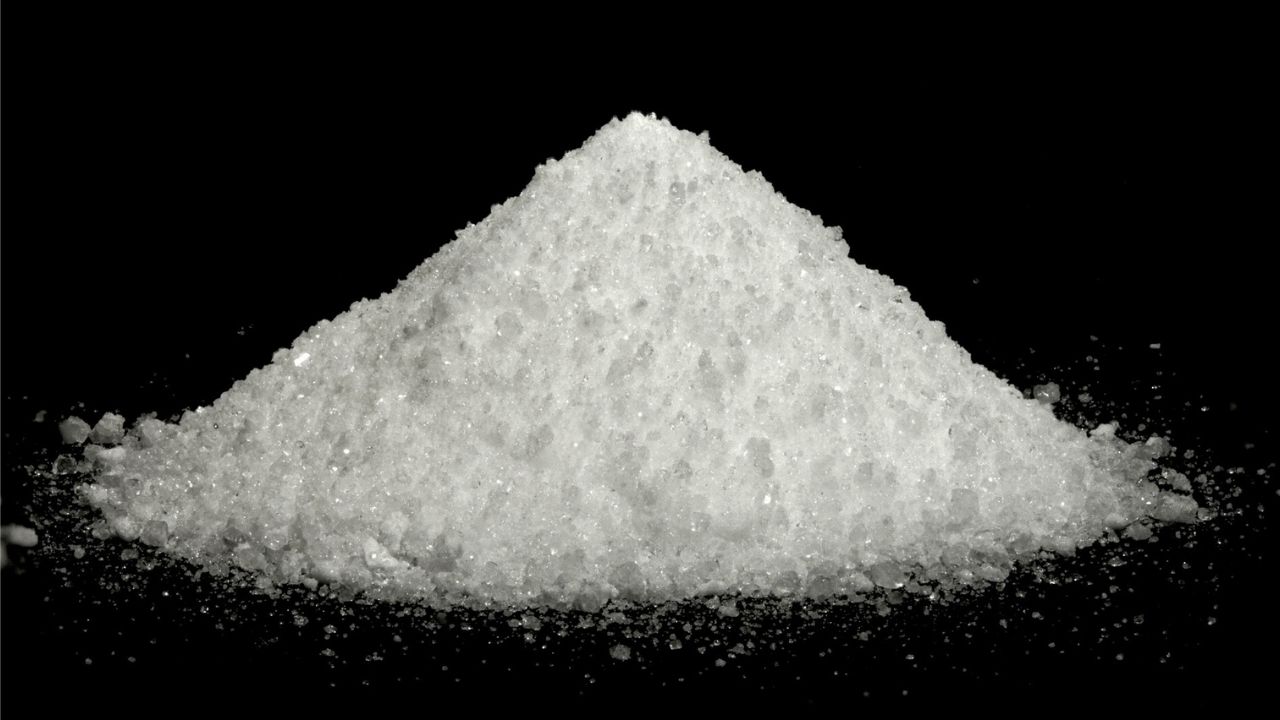
Gadolinium(III) sulfate might sound like a mouthful, but it's a fascinating compound with many uses. This chemical, often abbreviated as Gd2(SO4)3, plays a crucial role in various fields, from medicine to technology. Gadolinium itself is a rare earth element, known for its magnetic properties and ability to absorb neutrons. When combined with sulfate, it forms a compound that’s used in MRI contrast agents, enhancing the clarity of medical imaging. Additionally, gadolinium(III) sulfate finds applications in nuclear reactors and even in the production of certain types of glass. Curious about more? Let’s dive into 25 intriguing facts about this versatile compound!
Key Takeaways:
- Gadolinium(III) sulfate is a versatile compound with magnetic properties used in MRI and various industries. It requires caution in handling due to its toxicity and environmental impact.
- Discovered in 1880, gadolinium(III) sulfate has unique properties and a fascinating history. Ongoing research may uncover new applications and color-changing capabilities.
What is Gadolinium(III) Sulfate?
Gadolinium(III) sulfate is a chemical compound composed of gadolinium, sulfur, and oxygen. It has various applications in science and industry. Here are some intriguing facts about this compound.
-
Chemical Formula: Gadolinium(III) sulfate's chemical formula is Gd2(SO4)3. This indicates it contains two gadolinium atoms, three sulfate groups.
-
Appearance: This compound typically appears as a white crystalline solid, making it easy to identify in a lab setting.
-
Solubility: Gadolinium(III) sulfate is soluble in water, which means it can dissolve to form a solution.
-
Magnetic Properties: Gadolinium is known for its magnetic properties. This makes gadolinium(III) sulfate useful in various magnetic applications.
-
Use in MRI: Gadolinium compounds, including gadolinium(III) sulfate, are often used as contrast agents in magnetic resonance imaging (MRI) due to their magnetic properties.
Applications in Industry
Gadolinium(III) sulfate has several industrial applications. Its unique properties make it valuable in different fields.
-
Catalysts: This compound can act as a catalyst in certain chemical reactions, speeding up the process without being consumed.
-
Glass Manufacturing: Gadolinium(III) sulfate is used in the production of special types of glass, enhancing their properties.
-
Electronics: In the electronics industry, gadolinium(III) sulfate is used in the manufacturing of various components due to its electrical properties.
-
Nuclear Reactors: Gadolinium is used in nuclear reactors as a neutron poison, helping to control the reaction rate.
-
Phosphors: It is also used in phosphors, which are substances that emit light when exposed to radiation.
Health and Safety
Handling gadolinium(III) sulfate requires caution due to its chemical nature. Here are some important health and safety facts.
-
Toxicity: Gadolinium compounds can be toxic if ingested or inhaled, so proper safety measures are necessary.
-
Skin Contact: Direct contact with the skin can cause irritation, so wearing gloves is recommended.
-
Eye Protection: Safety goggles should be worn to prevent eye contact, which can cause irritation or damage.
-
Inhalation: Inhalation of gadolinium(III) sulfate dust can be harmful, so working in a well-ventilated area or wearing a mask is advised.
-
Storage: This compound should be stored in a cool, dry place, away from incompatible substances.
Environmental Impact
Gadolinium(III) sulfate can have effects on the environment. Understanding these impacts is crucial for responsible use.
-
Water Contamination: If released into water bodies, gadolinium(III) sulfate can contaminate the water, affecting aquatic life.
-
Soil Contamination: It can also contaminate soil, potentially harming plants and animals.
-
Waste Disposal: Proper disposal methods must be followed to prevent environmental contamination.
-
Recycling: Some components of gadolinium(III) sulfate can be recycled, reducing environmental impact.
-
Regulations: There are regulations in place to control the use and disposal of gadolinium compounds to protect the environment.
Fun Facts
Here are some fun and lesser-known facts about gadolinium(III) sulfate.
-
Discovery: Gadolinium was discovered by Jean Charles Galissard de Marignac in 1880.
-
Named After: The element gadolinium is named after the mineral gadolinite, which in turn is named after the Finnish chemist Johan Gadolin.
-
Rare Earth Element: Gadolinium is part of the rare earth elements group, which are known for their unique properties.
-
Color Change: When exposed to certain conditions, gadolinium(III) sulfate can change color, making it interesting for scientific experiments.
-
Research: Ongoing research is exploring new applications for gadolinium(III) sulfate, potentially leading to exciting discoveries in the future.
Final Thoughts on Gadolinium(III) Sulfate
Gadolinium(III) sulfate is more than just a chemical compound. Its unique properties make it invaluable in various fields. From medical imaging to industrial applications, this compound plays a crucial role. Its paramagnetic nature enhances MRI scans, providing clearer images for better diagnoses. In industry, it’s used in phosphors and electronics, showcasing its versatility. Understanding these facts about gadolinium(III) sulfate not only broadens your knowledge but also highlights its importance in modern technology and healthcare. Whether you’re a student, a professional, or just curious, knowing about this compound can be quite enlightening. So next time you hear about MRI scans or advanced electronics, remember the role gadolinium(III) sulfate plays behind the scenes. Keep exploring, stay curious, and appreciate the science that makes our world better.
Frequently Asked Questions
Was this page helpful?
Our commitment to delivering trustworthy and engaging content is at the heart of what we do. Each fact on our site is contributed by real users like you, bringing a wealth of diverse insights and information. To ensure the highest standards of accuracy and reliability, our dedicated editors meticulously review each submission. This process guarantees that the facts we share are not only fascinating but also credible. Trust in our commitment to quality and authenticity as you explore and learn with us.
